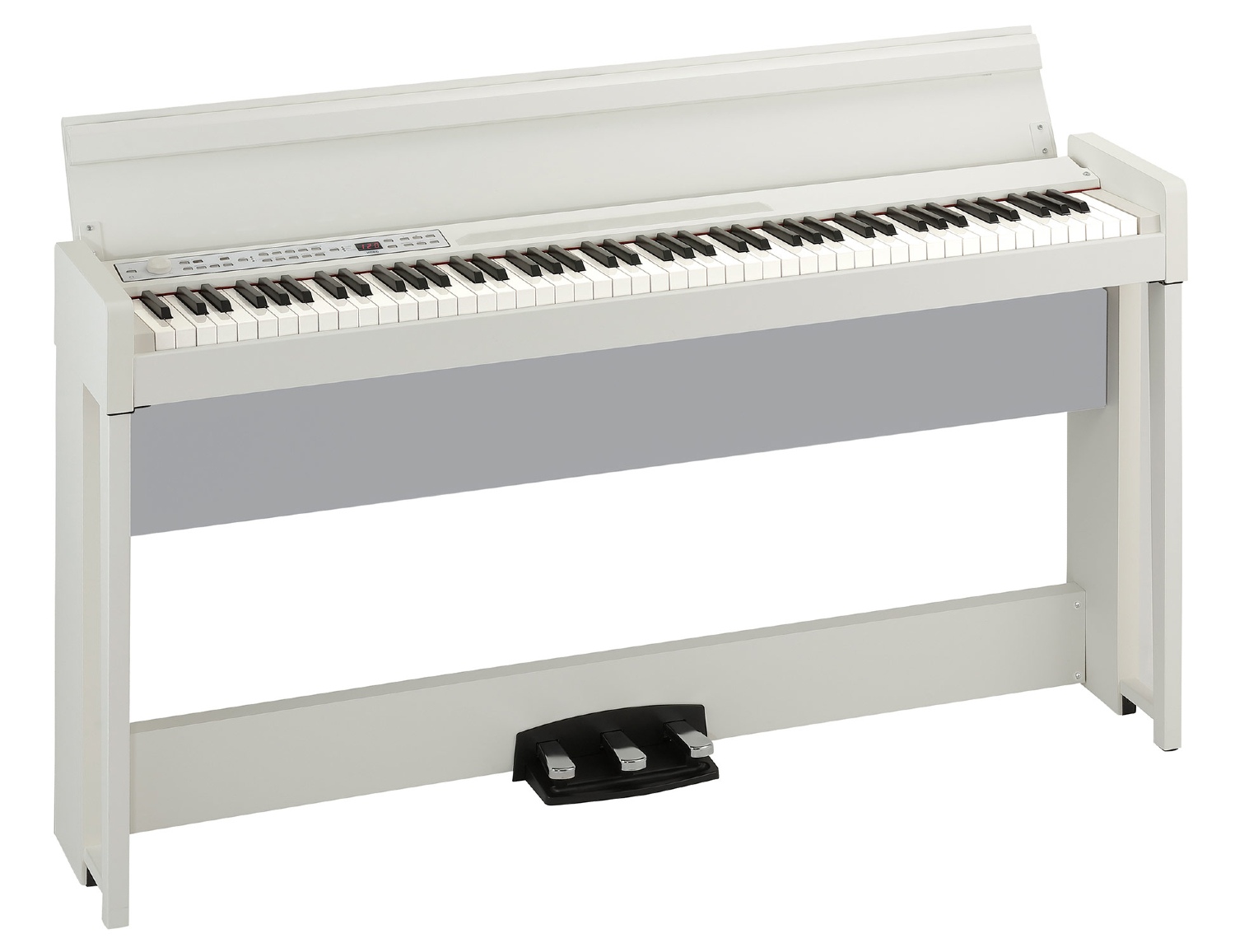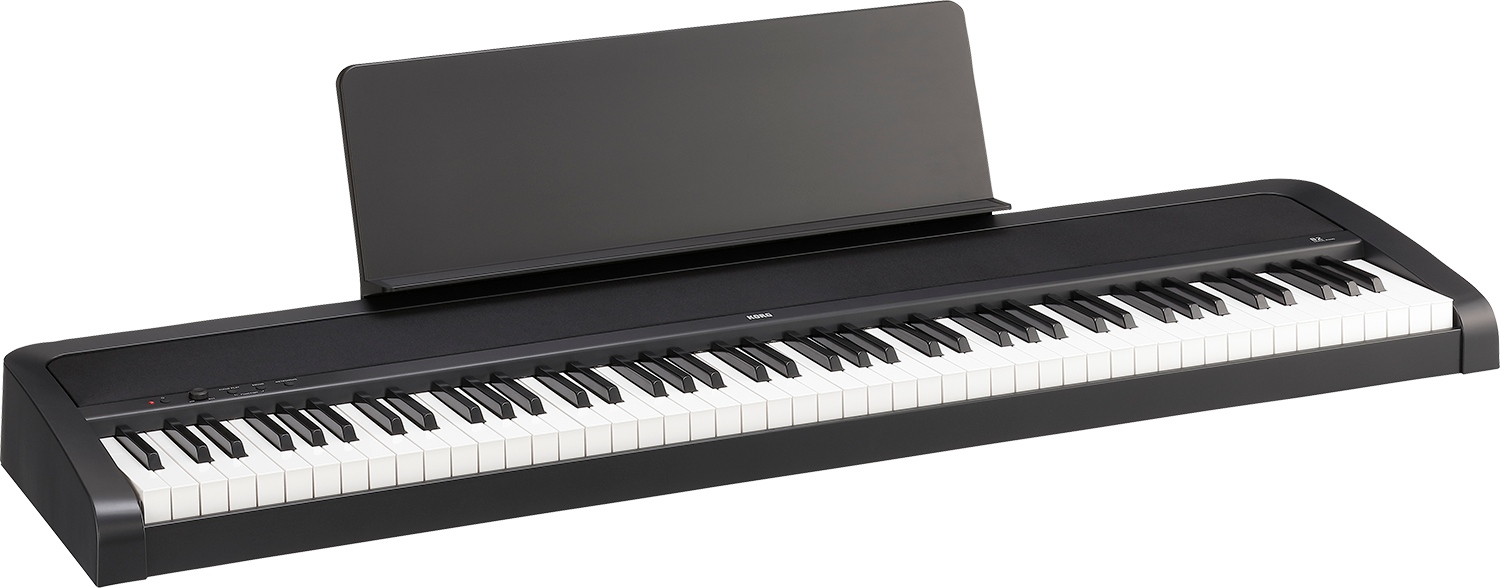KORG C1-WH - Hvid Digitalpiano
KORG C1 er et fremragende klaver, både som et alternativ til et akustisk instrument, eller hvor et traditionelt klaver ikke kan bruges.
Designet og lavet i Japan med 30 realistiske instrumentlyde, herunder samplinger af både tysk og japansk flygel.
Stativet med indbyggede højttalere gør dette digitalklaver til et smukt møbel, der passer lige godt på scenen som i ethvert hjem.
Et utroligt overkommeligt digitalklaver i ægte Korg-kvalitet!
Specifikationer C1 WH:
Hvid digitalpiano
88 vægtede & anslagsfølsomme tangenter
30 fremragende klaverlyde
50 demosange
Indbygget reverb, brilliance & chorus
120 stemmers maks. polyfoni
2 x25w forstærker
2x 100 x 20mm indbyggede højtalere
Udgange: Line- & 2 stk. hovedtelefonudgange med 3,5mm minijackstrik
MIDI In & Out
Stativ med indbyggede højtalere, 3-vejspedal og adapter inkluderet
Bredde: 1346mm
Dybde: 347mm
Højde: 770mm
Vægt: 35 kg
KORG - Innovation siden -60’erne
Korg blev grundlagt i Japan i begyndelsen af 60'erne af Tsutomu Katoh og hans kollega Tadashi Osanai. Virksomheden hed oprindeligt Keio Electronic Laboratories og flyttede ind i sine første lokaler i 1962. Navnet Keio blev valgt, fordi det indeholdt initialerne til de to grundlæggeres efternavne. Det var også navnet på jernbanelinjen, der passerede lige uden for vinduet på deres værksted.
I 1963 blev Katohs og Osanais første produkt DoncaMatic DA-20, en elektronisk rytmeboks baseret på et system af roterende diske, introduceret. DA-20 fik en efterfølger i DA-11, en helt igennem elektronisk DoncaMatic-model.
Et par år senere blev Katoh kontaktet af Fumio Mieda, en ingeniør, der ønskede at bygge en ny type orgel. I modsætning til de fleste af datidens orgler var Miedas version programmérbar. Selvom han selv brugte ordet orgel, havde Mieda i realiteten konstrueret en synthesizer. Halvtreds eksemplarer blev fremstillet og solgt under det nye navn Korg, som var en sammentrækning af navnet Keio og Organ (engelsk for orgel, som bekendt).
I løbet af 70'erne udviklede Korg en række synthesizermodeller som Mini Basket, PE-1000 Polyphonic Ensamble og MS-20. Virksomheden begrænsede sig ikke kun til forskellige synthesizere. I 1975 lancerede de verdens allerførste tuner i lommestørrelse, WT-10, et produkt, der siden har fået utallige tilhængere.
I 1981 kom PolySix, en synthesizer, der var unik, fordi den både var programmérbar, polyfonisk og (måske vigtigst af alt) så billig, at stort set alle havde råd til at købe en. Et andet stort udviklingsskridt blev taget i 1988 med Korg M1, en synthesizer, der indeholdt realistiske sample-baserede lyde, trommemaskine, sequencer og digital effektenhed, alt sammen kombineret til et instrument - verdens første workstation, kort sagt.





















